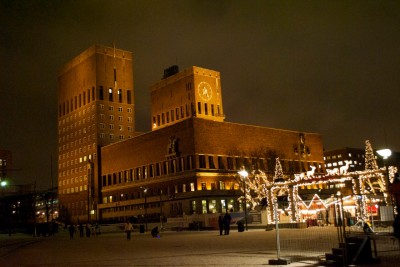Government figures released on Tuesday show that 9.68 percent of residents in the Norwegian capital Oslo are defined as living in poverty, giving the city the worst figures in the whole country.

The country-wide level of poverty in Norway lies at 4.5 percent, which translates into 215,415 people. But the level is Oslo is significantly higher, with 54,282 now below the poverty line.
The official poverty line is calculated regionally, with those earning under 50 percent of the median wage in the local authority area considered as living in poverty. Social security is not included, and students and those with assets three times larger than the median income are also not counted. The poverty line is calculated on the basis of individuals living alone, with those living together in the same household having a lower limit. Those is Oslo who earn NOK 128,003 (USD 24,399) after tax are considered to be living in poverty, whereas the lowest limit found elsewhere in Norway is NOK 105,645 (USD 20,137). The highest percentage of those living in poverty found outside of the capital is 8 percent in Modalen in the Sogn and Fjordane region.
‘Don’t just count’
Tone Fløtten, a poverty researcher at Fafo, told Norwegian Broadcasting (NRK) that the level of poverty in Oslo “is connected to a very high degree with the population and the proportion of immigrants.” The researcher warned that “it does not help to count the amount in poverty if you just count,” encouraging politicians to come forward with new measures and policies.
Members of the city council administration in Oslo also commented on the news. The council member responsible for social issues, Anniken Hauglie of the Conservative Party, told NRK that the poverty levels were “a high number, and that is why the city council is so busy with securing good schools for children and work for adults.” She suggested that a number of local measures to address low incomes were not factored into the government statistics, such as “voluntary work provision and free holidays.” She believes that the “record growth in immigration” in recent years, which has made the capital “the biggest immigration area,” was responsible for the figures. “From previous studies, we know that on the whole it is immigrant families that have lower incomes than the rest of the population, therefore these numbers are not that unnatural,” she added.
Growing debate on poverty
Hauglie’s party has been part of a growing debate on the issue of poverty reduction in the country in recent times. Over the weekend, internal debate raged at a national Conservative Party meeting on whether to institute a minimum wage in Norway along the lines of the American or British system. A number of local Conservative politicians, principally from Oslo, are for the proposal, but the idea met opposition from their national work and social policy spokesperson, Torbjørn Røe Isaksen, who expressed fears when speaking to newspaper Dagsavisen that “a minimum wage will become in practice a maximum wage” and strengthen employers’ desire to fight wage increases.
The proposer of the policy, Michael Tetzschner, suggested on the other hand that the idea would fight social dumping in places where “an influx of immigrants looking for work from EU countries has led to unacceptably low wages,” a problem that could lead to “severe discord” in the future. Some employers’ organizations are in favour of a minimum wage, which is strongly opposed by trade unions.
In recent days, Norway was once again named as the best country in the world in which to be a mother by Save the Children, while other figures recently released revealed that 85,000 children were living in poverty in the country. As with the more general situation, child poverty is most severe in the relatively poorer and more ethnically-diverse east side of Oslo. Meanwhile, unemployment remains low in the country and has continued to decrease in recent months, falling in April by 1,200 to 1.8 percent of the workforce.

